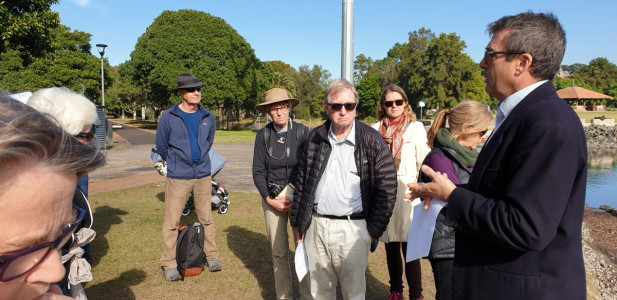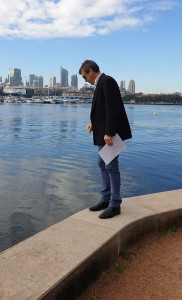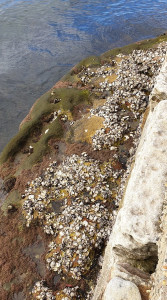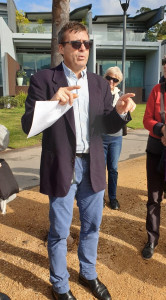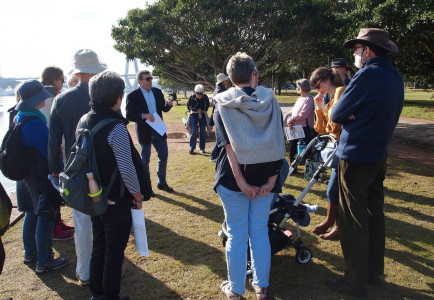Marine Scientist, Professor Ross Coleman from the University of Sydney led the morning marine walk. The group gathered by the mangroves, near Chapman Rd, where Professor Coleman stood by the sea wall and declared the park was more like something in Holland than the original shore.
Professor Coleman stressed his interest was rehabilitation, which has to be balanced against socio-economic factors, and the demands for the community for amenity.
Both Rozelle and Blackwattle Bays are surrounded by seawalls, and the pre-settlement saltmarsh, muddy beaches, rocks and rocky headlands have been lost. That also means a wide variety of habitats have also gone.
There have been some attempts to create habitats between the sandstone blocks that line the sheer concrete seawall, but Professor Coleman said these were limited.
His group installed specially designed flowerpots that are attached to the seawall, along Blackwattle Bay. The result was a big increase in the number of organisms, particularly snails and limpets, but not such a big increase in diversity. This is in part due to the fact that Rozelle and Blackwattle Bays are ‘blind-ended’: there is no nearby source for new species. Professor Coleman was pleased to find it was impossible to actually see the flowerpots on the northern side of Blackwattle Bay, they were so heavily encrusted with oysters.
He told the group he had proposed a rehabilitation of Blackwattle Creek, but it was rejected because the increase in water flow would mobilise pollutants in Blackwattle Bay.
The Glebe Society thanks Professor Coleman for an engaging, informative and challenging talk, and for deepening our understanding of our Bays.
